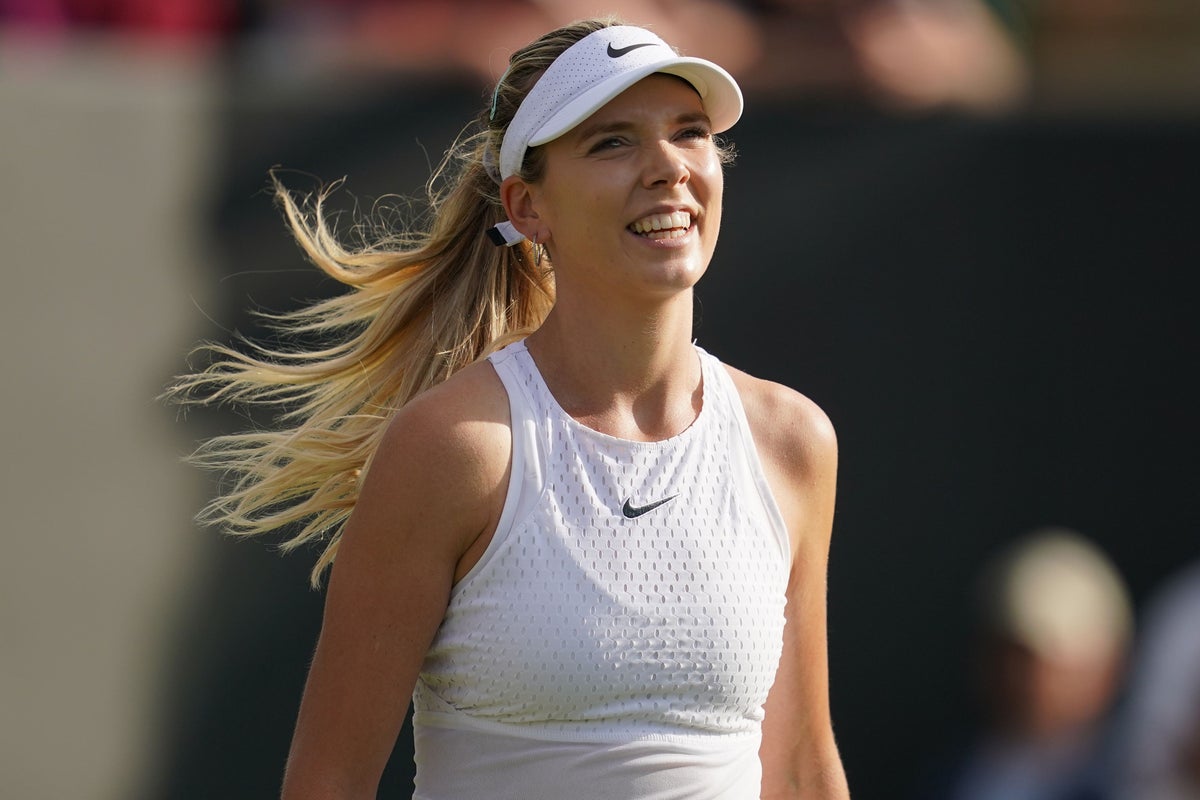
Britain’s leading players were sunning themselves on holiday as the Wimbledon finals took centre stage.
The tournament was not even at the half-way stage when Katie Boulter’s late-night demolition by Elena Rybakina ended home singles hopes in the third round.
There had been some good moments, notably a first victory on Centre Court for Liam Broady against fourth seed Casper Ruud to join Boulter in the third round.
Boulter is now well inside the top 100 after building on her first WTA Tour title in Nottingham, with the player she beat in the final, Jodie Burrage, also set to hit two figures for the first time.
But there is no sugarcoating the fact that the only female British players in singles at Wimbledon needed wild cards and there were none at all at the French Open.
For a country that hosts a grand slam and receives more than £40million in no-strings-attached funding from the All England Club a year, that is clearly not good enough.
The incredible success of Andy Murray, followed by standout moments for Emma Raducanu, Kyle Edmund and Cameron Norrie, has masked what remain stubborn weaknesses, and now the mask has fallen, what lies behind is not a particularly pretty sight.
It is certainly not all doom and gloom – there remain four British men in the top 100, a number that would have been cause for champagne corks popping for much of the last 40 years, with Norrie and Dan Evans consistent top-30 players.
Boulter and Burrage have a great chance to establish themselves in the top 100 and become grand slam regulars, while Harriet Dart, Katie Swan, Heather Watson and Broady are also within striking distance.
But true strength in depth remains an elusive goal, and even that does not guarantee second-week interest at grand slams.
It was interesting to hear French tennis officials having to answer the same questions as their Lawn Tennis Association counterparts over a slew of early exits at Roland Garros despite France boasting 12 players in the men’s top 100.
Of the grand slam nations, only the US, with its advantages in population, facilities and weather, has a good balance of numbers and high-ranked players, and even they are wondering where their next slam champion is coming from.
Eastern European nations with a fraction of the budget have been far more successful in creating winners, and that is a conundrum the wealthier federations continue to try to crack.
The LTA has puts its eggs in the basket of a national academy in Loughborough that heavily funds and supports a small group of teenage players.
The jury remains out on whether it is the best use of the governing body’s millions but there is at least evidence it is working for the players who are there.
Girls’ singles quarter-finalists Ranah Stoiber and Mika Stojsavljevic are both among the chosen few, as is 17-year-old Henry Searle, who brilliantly ended a 61-year wait for a boys’ singles champion at Wimbledon in maybe the best moment of the tournament for the home nation.
Translating junior success into a strong professional career is never a given but Searle is clearly a big talent and there is a group of promising girls including Stoiber, Stojsavljevic, Isabelle Lacy, Mingge Xu and 14-year-old Hannah Klugman, around whom there is a great deal of excitement.
Mark Ceban, meanwhile, cemented his status as the best 14-year-old boy in Europe by winning the under-14 title.
Patience will be needed with all of them, and the most encouraging sign in the short term would be if Raducanu and Jack Draper, who are still very early in their careers, can return to full fitness and avoid the consistent injury problems that have frustratingly held them back.
Credit should also be given to Neal Skupski, who ticked the one box missing from his CV with his first grand slam men’s doubles title, and Alfie Hewett and Gordon Reid for their ongoing success in the wheelchair game.







